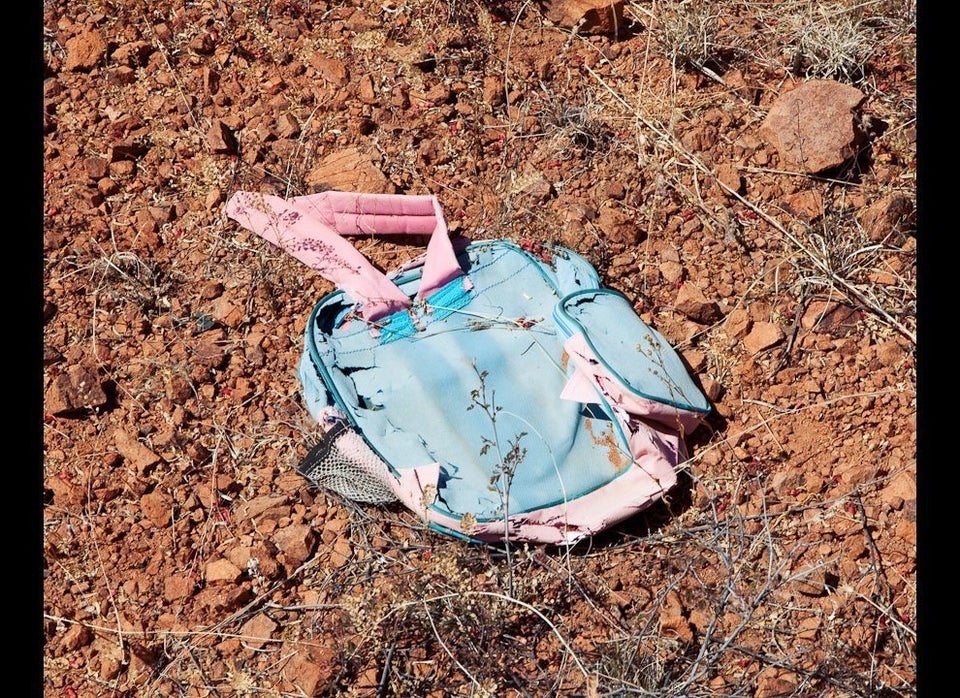Not many people consider the human side of immigration, let alone take the time to document the belongings of those left behind by the migrants crossing the U.S.-Mexico border.
Worn sneakers, dirty backpacks and empty water bottles fill the Sonoran desert. Each object tells a story of struggle, hope and determination and it wasn't until recently that they were collected for anthropologists hoping to study the science behind migration phenomenon.
"This is not garbage" said Jason De Leon, Assistant Professor of Anthropology at the University of Michigan, "The goal of the project is to rigorously and systematically collect data on the social phenomenon of border crossing using the lens of anthropology to provide insight into the realities of this process."
Since 2008, The Undocumented Migration Project, directed by De Leon, has collected what has become the largest assemblage of migrant artifacts in the country.
In addition to clothing and water bottles, personal possessions such as letters, photos and prayer cards have also been collected. The artifacts are organized in boxes and meticulously numbered, just as a typical museum collection would do. De Leon had his heart set on studying archaeology but then decided to change sub-disciplines and pursue his ethnographic interests in Latino migration.
"I could no longer continue to sit in excavation units in Mexico and listen passively as people told me about the suffering and violence that they had endured in the U.S. in order to make a decent living wage," explains De Leon to HuffPost.
Even though there is a some evidence that the numbers of migrants attempting to cross the border from Mexico has decreased, there are still approximately one-half million immigrants attempting to cross the border in southern Arizona each year. Of those, 90 percent are Mexican, while 10 percent come from Central and South American countries. An estimated 200 people die each year from causes incurred during border crossing, including hyperthermia, according to De Leon.
There are emotional and physical challenges in documenting the sites that people consider "garbarge."
"Trying to document violence and suffering in Southern Arizona and in Northern Mexico can be emotionally taxing," De Leon said to HuffPost. He is constantly racing against the clock to find sites and collect information before they are cleaned up and gone forever. Working in the middle of the summer during times when temperatures can reach 115 degrees can also be physically exhausting.
Interestingly enough, while documenting, De Leon has encountered migrants in the desert but works hard to avoid them out of fear of putting them into danger. He doesn't seek them out and works during the hottest part of the day when people are hiding in the desert shadows to avoid the heat.
"Typically, when you run into someone in the desert they need help. In the majority of cases where I have encountered someone they have asked me to call 911 because they were injured, suffering from extreme dehydration, and/or on the verge of death," he told The Huffington Post.
De Leon says that some humanitarian groups and artists have incorporated migrant artifacts in art projects to raise awareness of this issue. Still, people that save or collect migrant items have tended to preferentially select particular items (e.g., shoes, photos, personal possessions) over objects that appear more "mundane" (e.g., water bottles, food wrappers). He considers all of these artifacts to be of "equal importance."
However, not everyone is on board with the project, comments such as: "Tell them to keep their illegals and make sure they pick up after themselves," and, "The only thing this trash is an indicator is that these people have no love or respect for this country. They enter illegally and dump trash where ever they go" have been some of feedback the project has received.
"One only needs to read online comments about my work to get a sense of the hatred and racism that this type of research elicits from some people," De Leon explained.
The project has received opposition from people who either want to simplistically characterize migrant artifacts as "trash" or those who are blatantly anti-immigrant. Even so, the project has has received funding from the National Science Foundation and is backed 100% by The University of Michigan.
While De Leon has been contacted by the Smithsonian as a possible venue for the first exhibit of artifacts, he hopes the premiere exhibit will be in the Museo Nacional de Antropología in Mexico City with parts of the collection eventually repatriated to Mexico.
"These objects are an important historical record of the shared migration story of Americans and Latinos, but I think it is important that these artifacts are returned to the communities of people who have been so directly impacted by out-migration," De Leon said to HuffPost, "These artifacts belong to the migrants that have faced the harsh Sonoran desert."

